
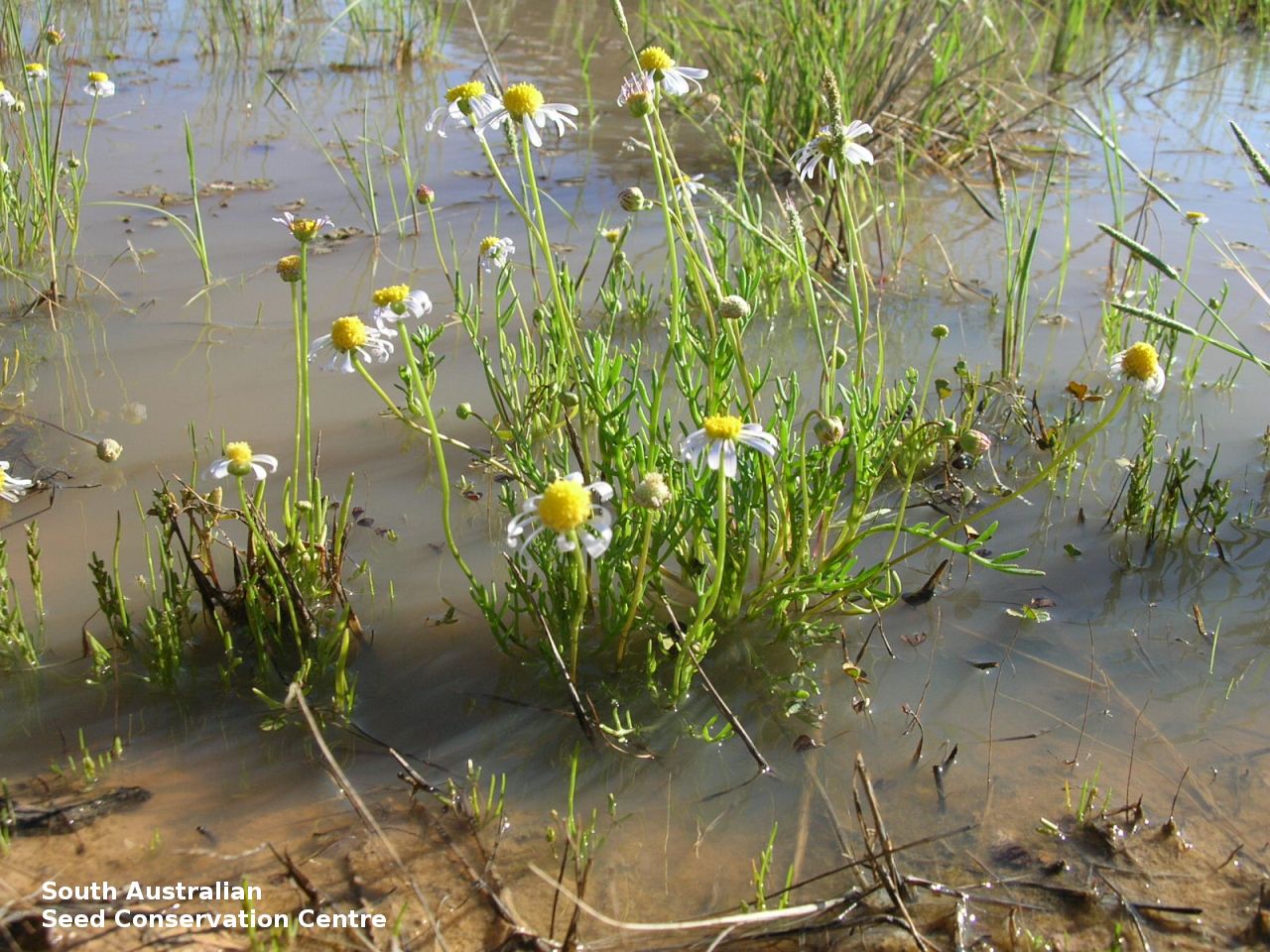
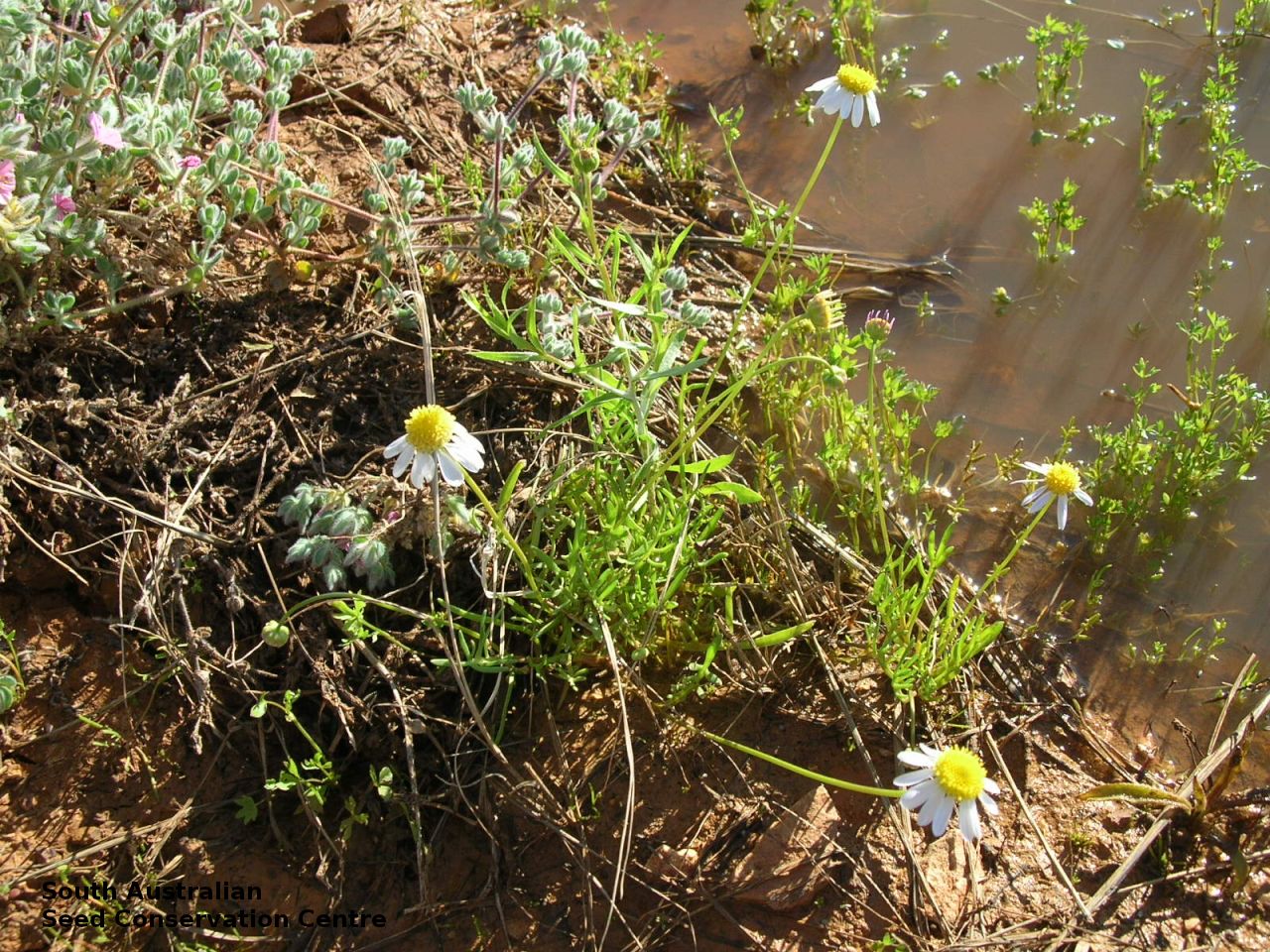
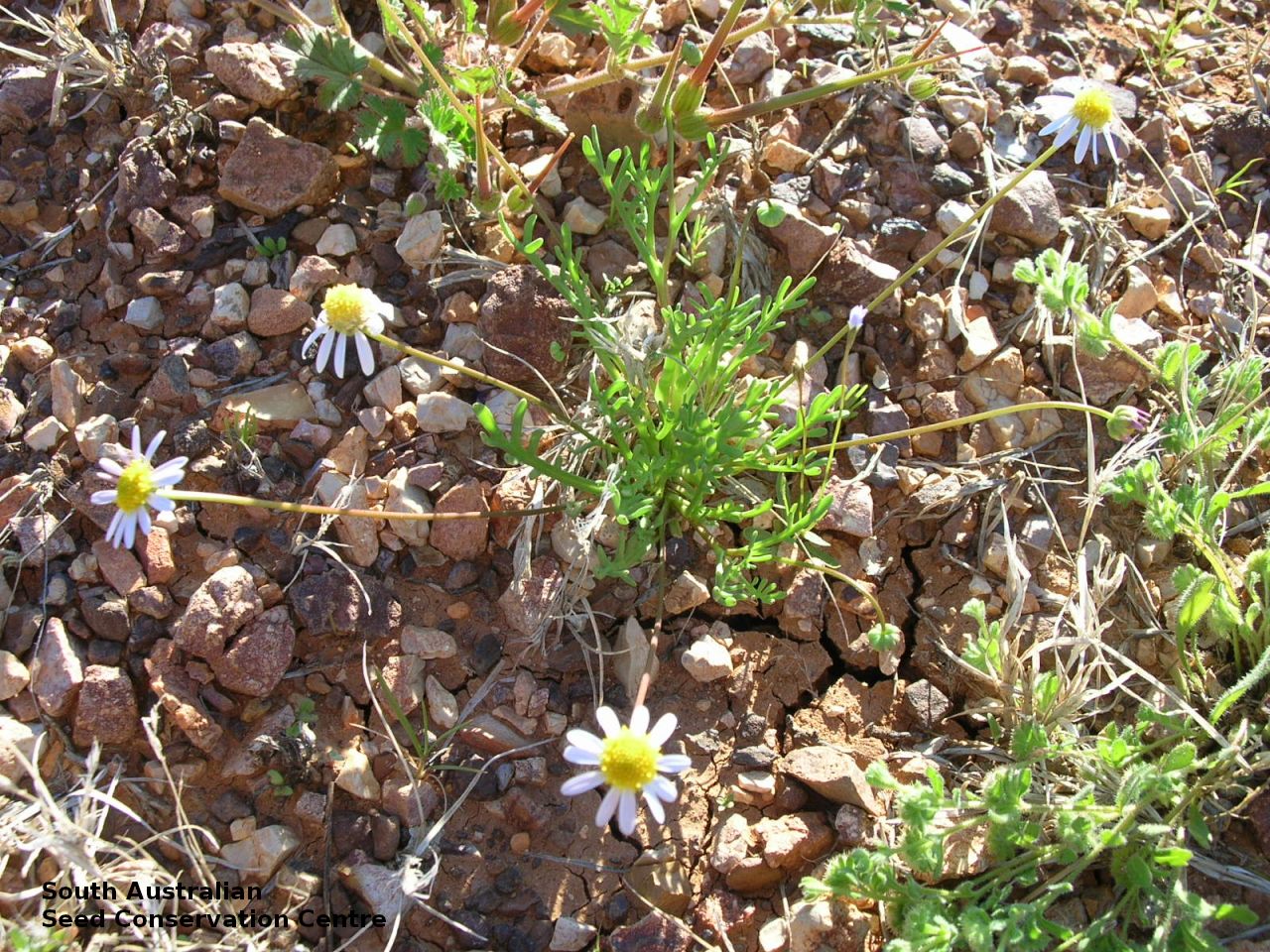
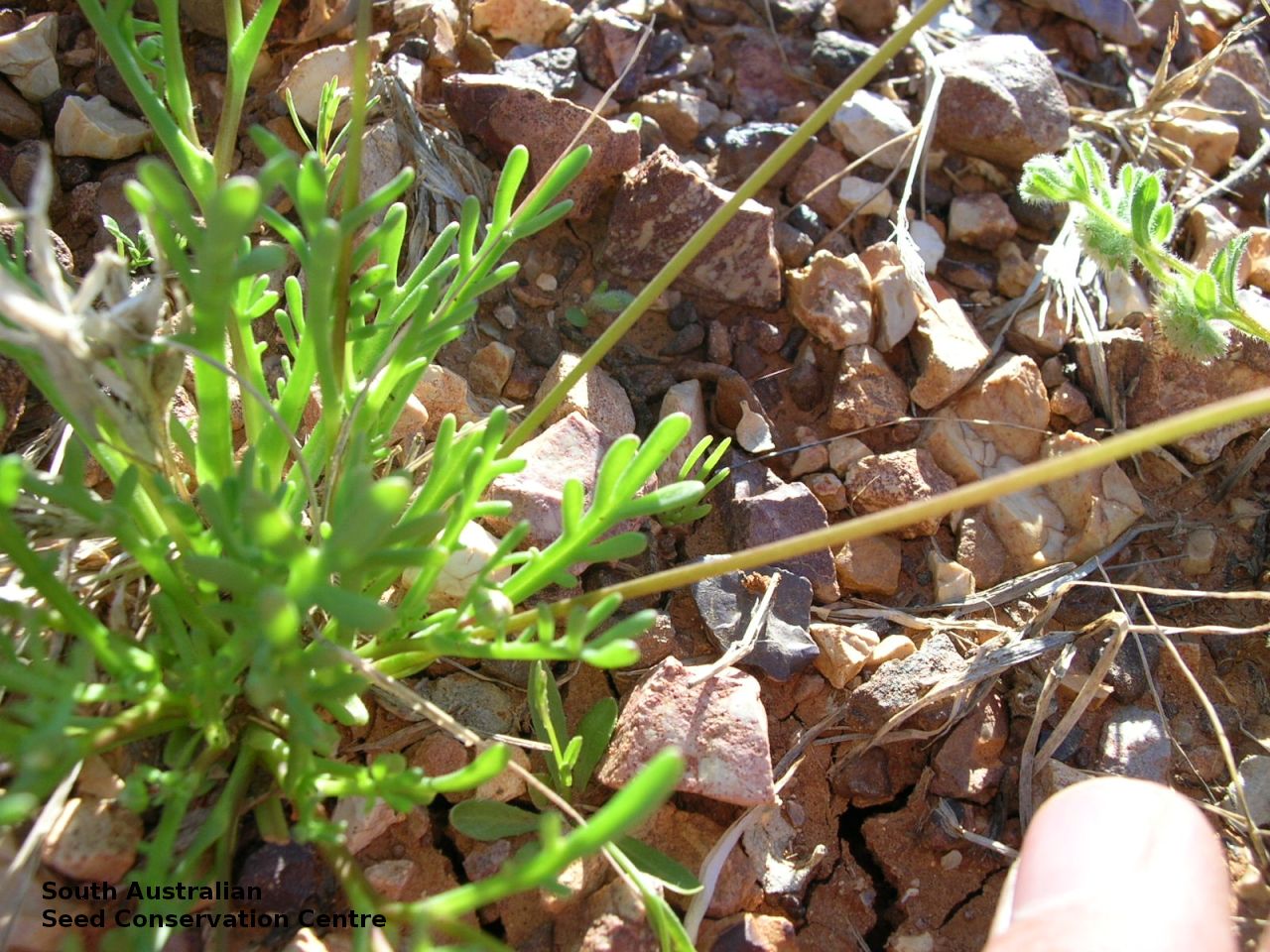
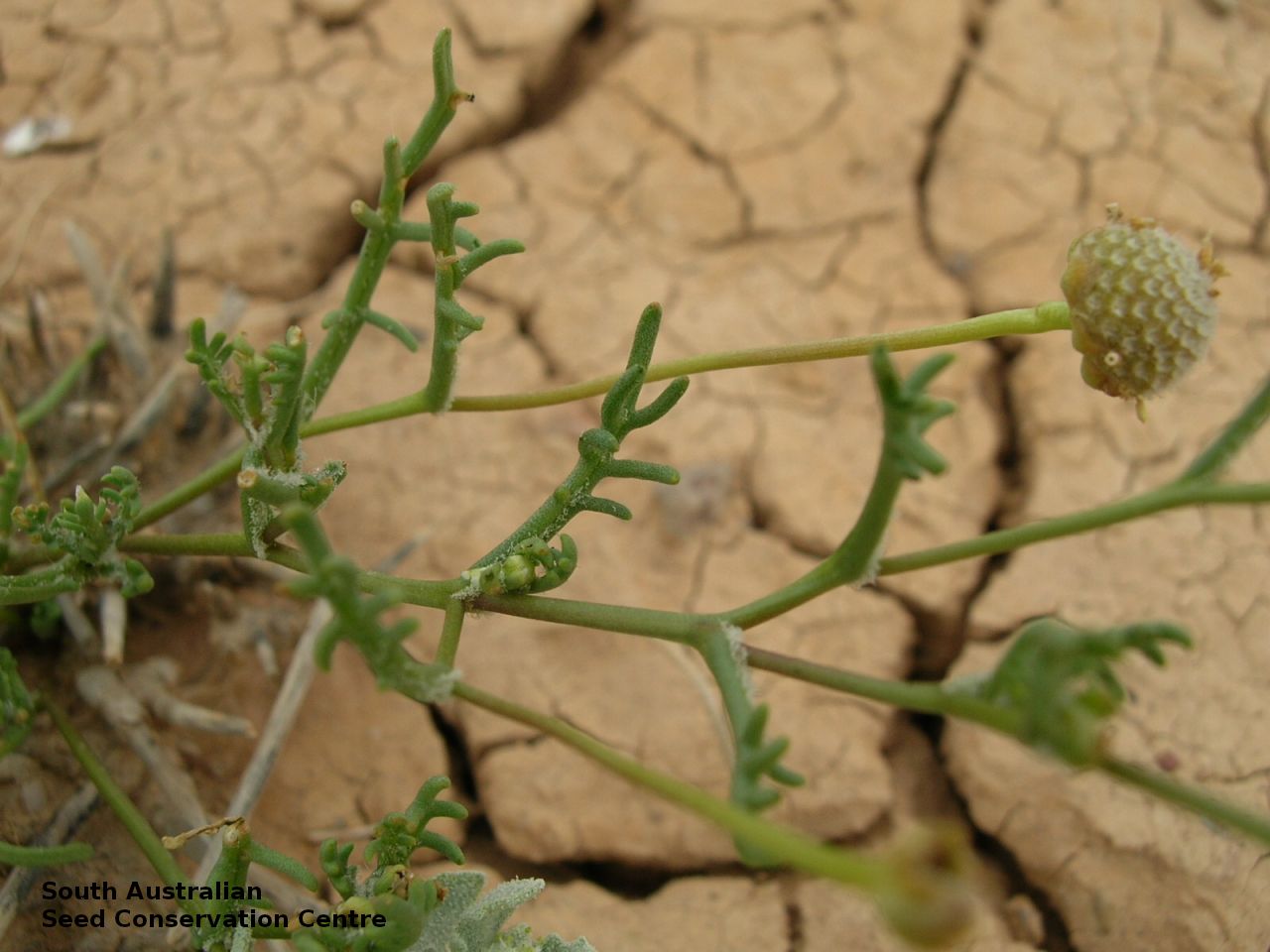
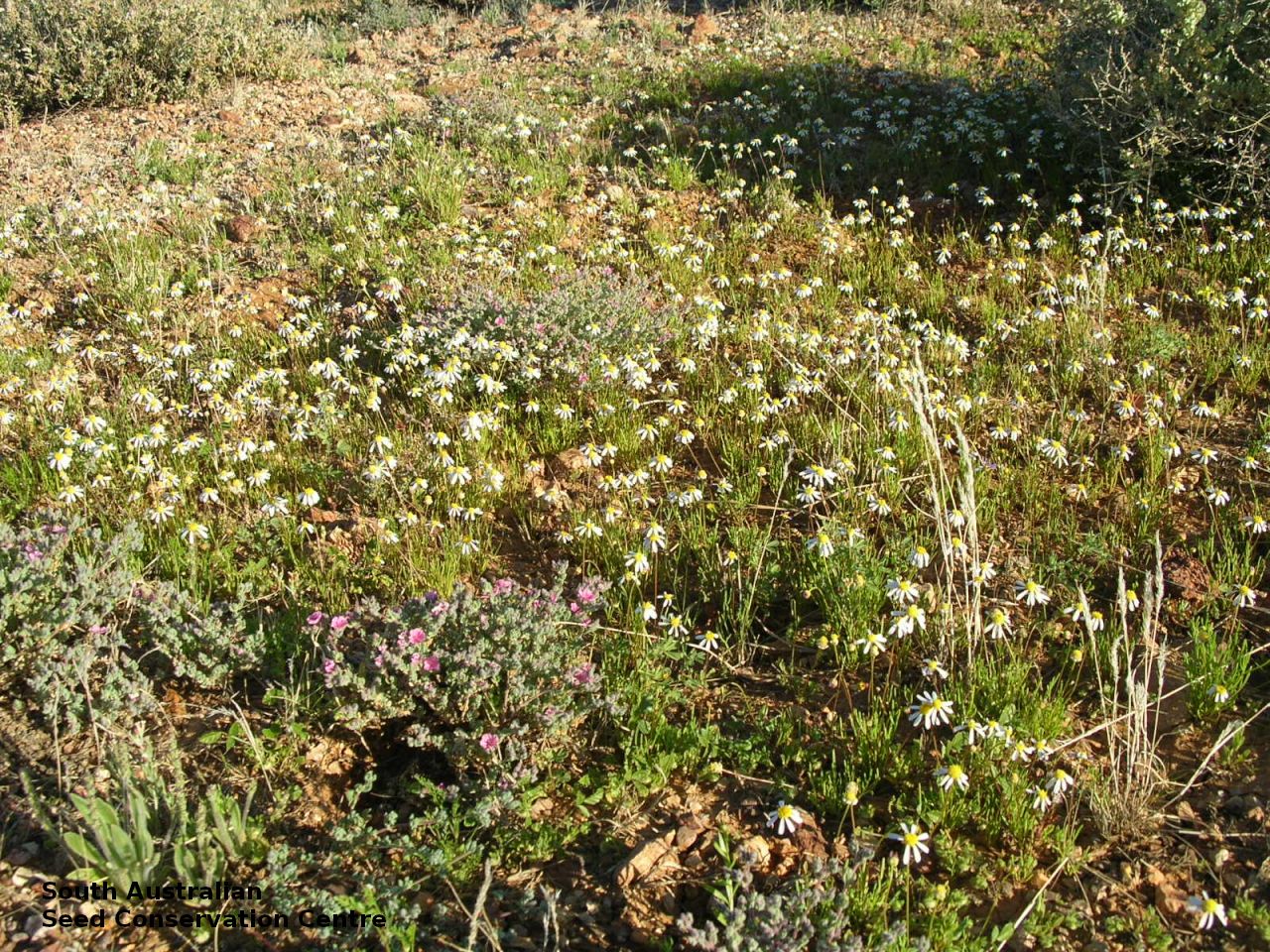
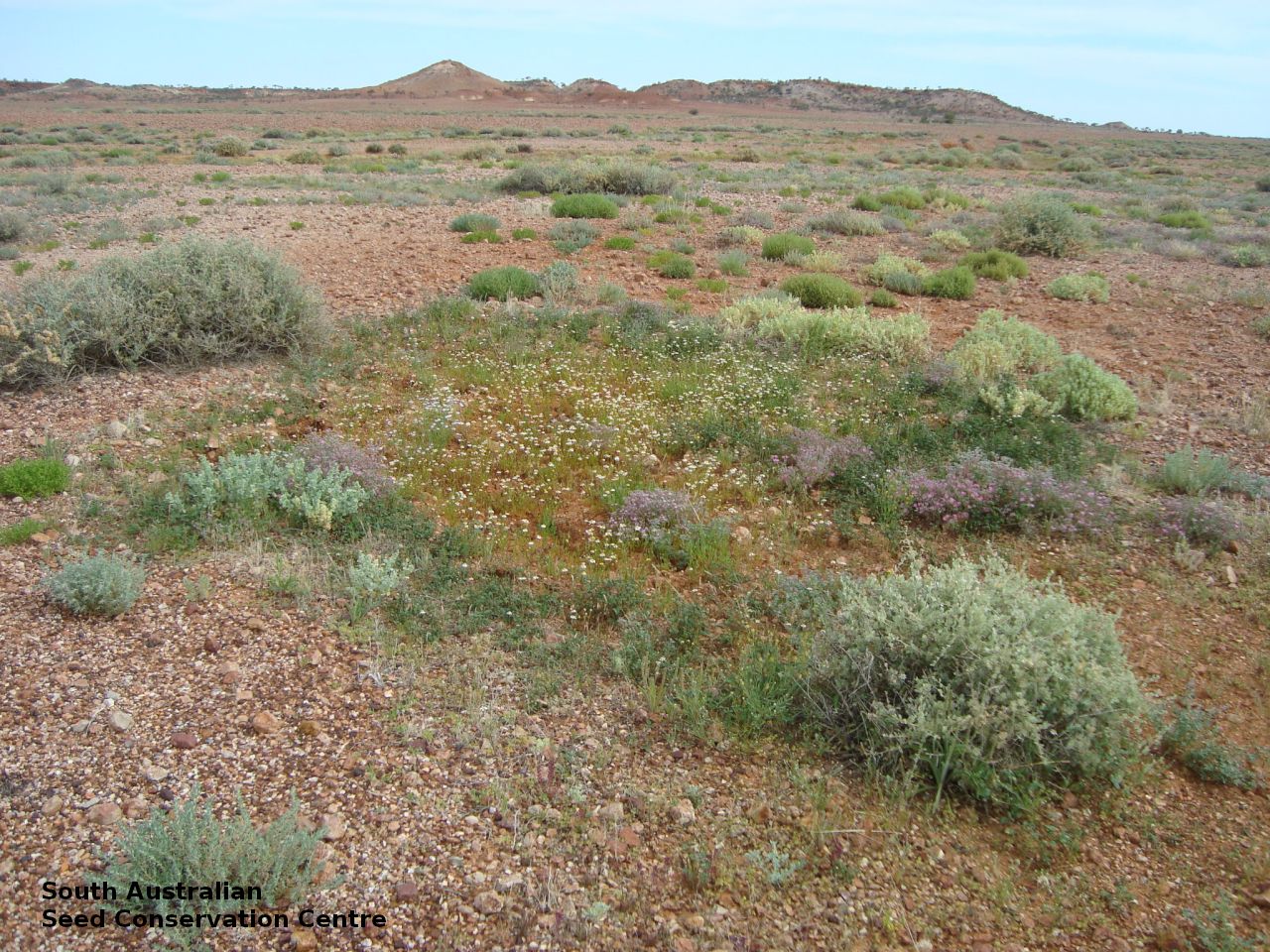
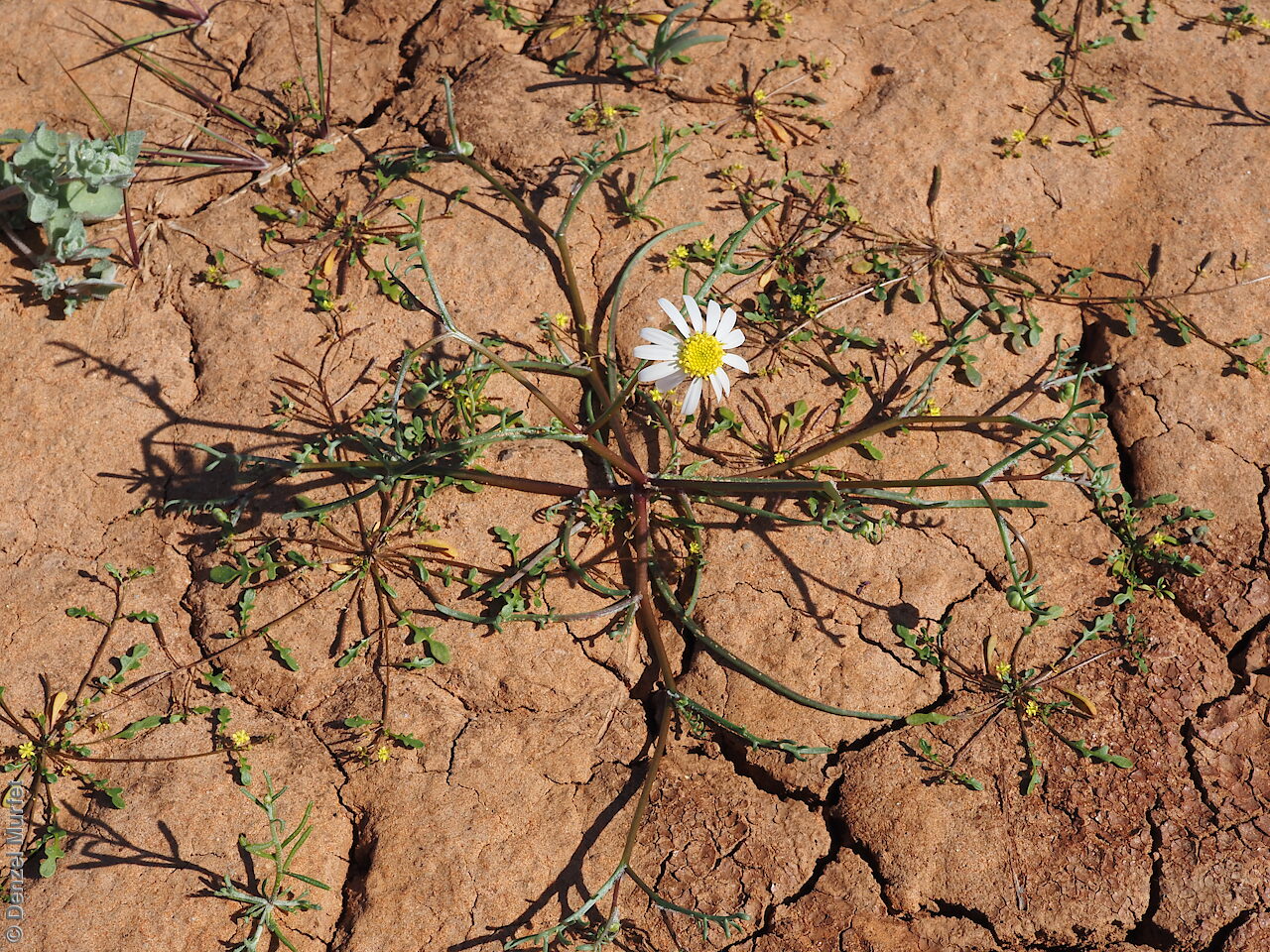
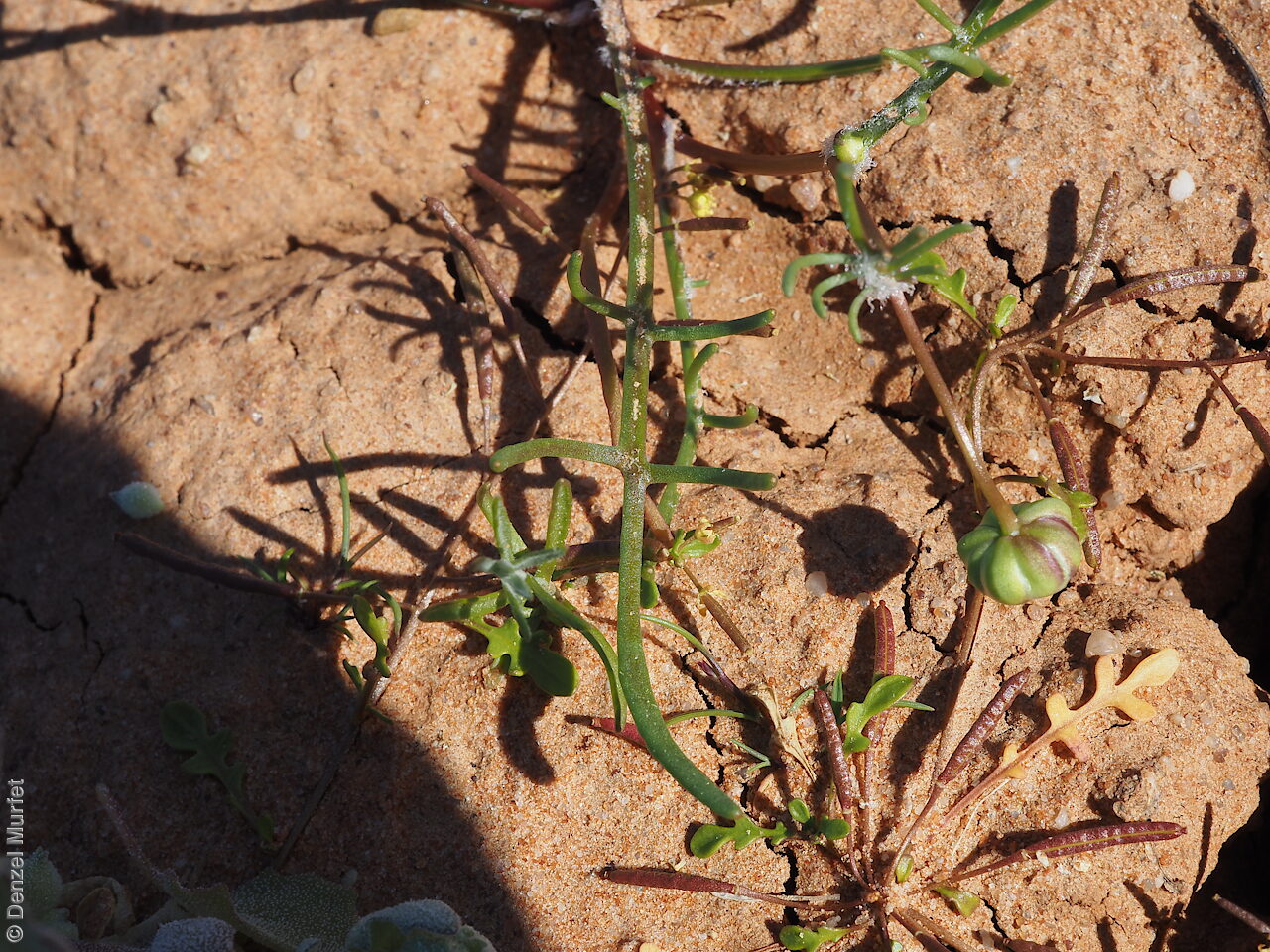
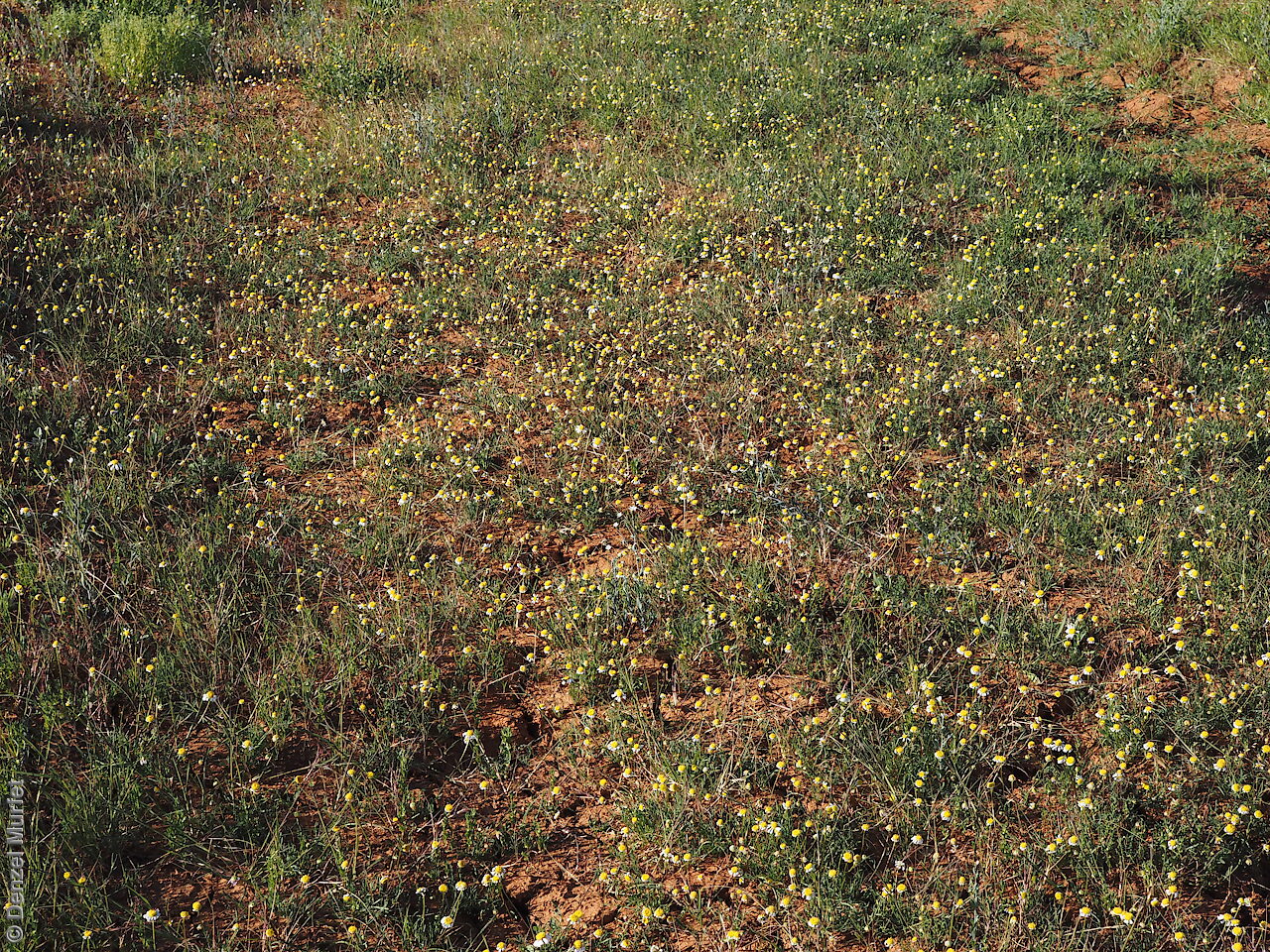
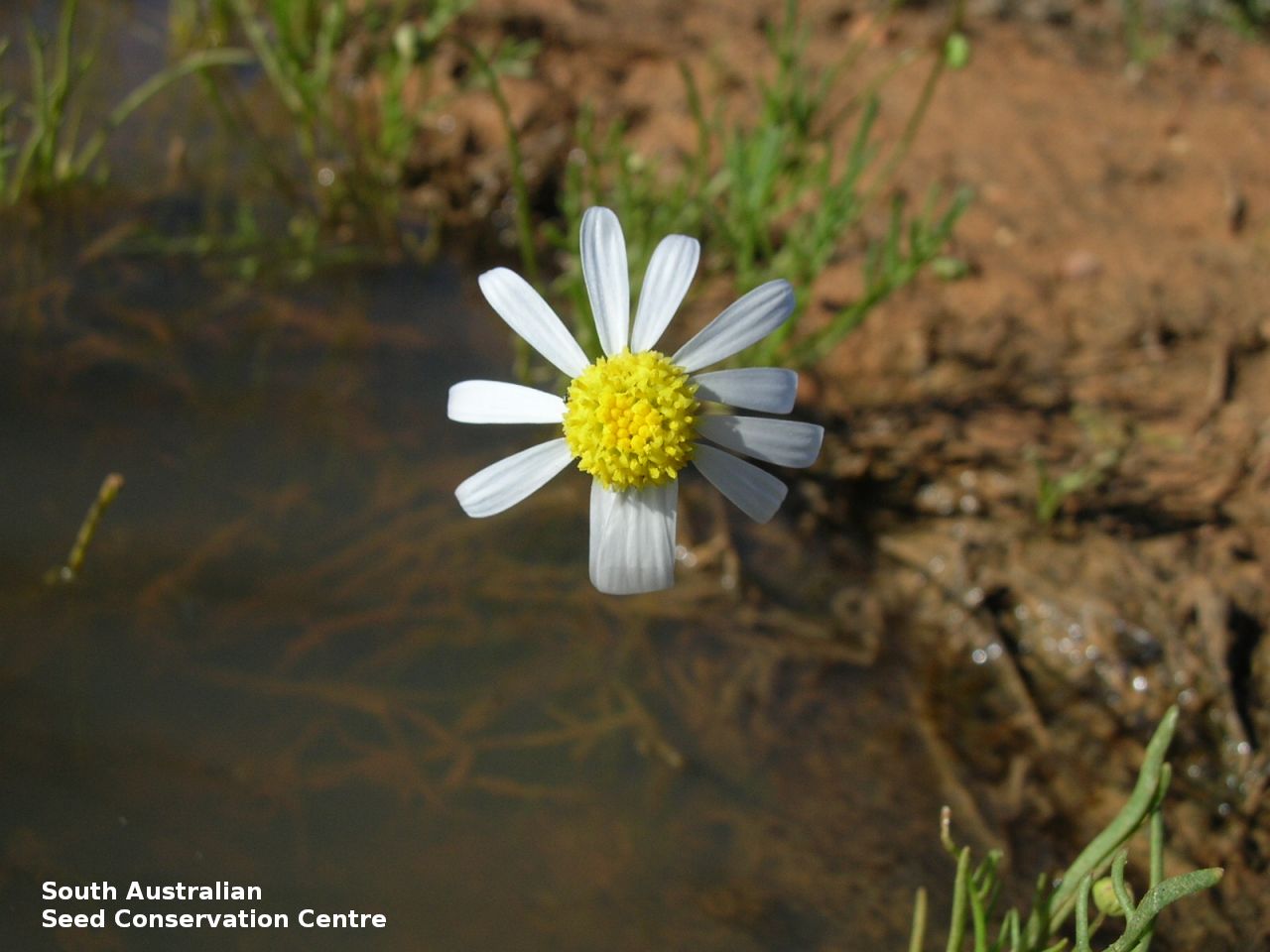
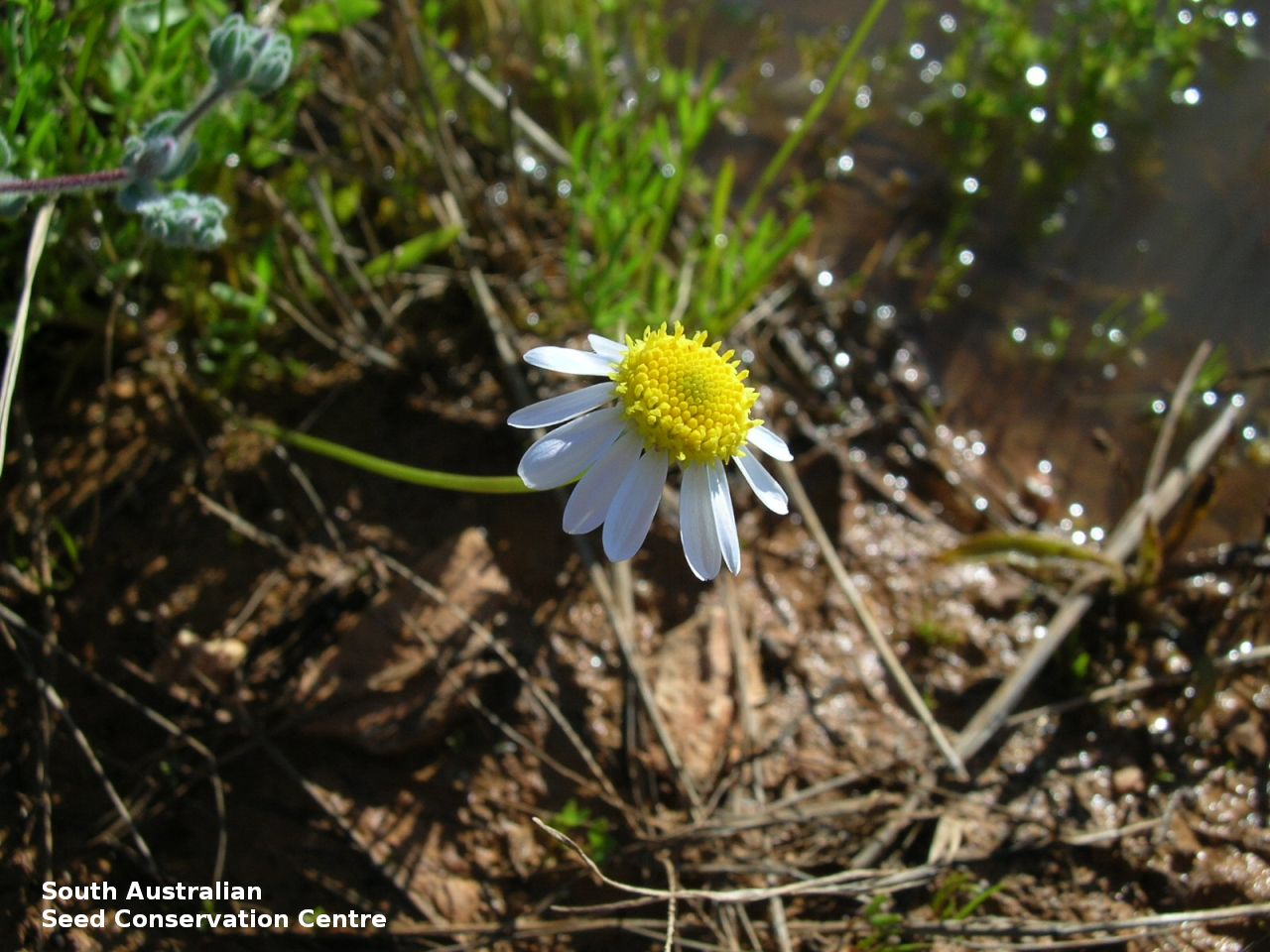
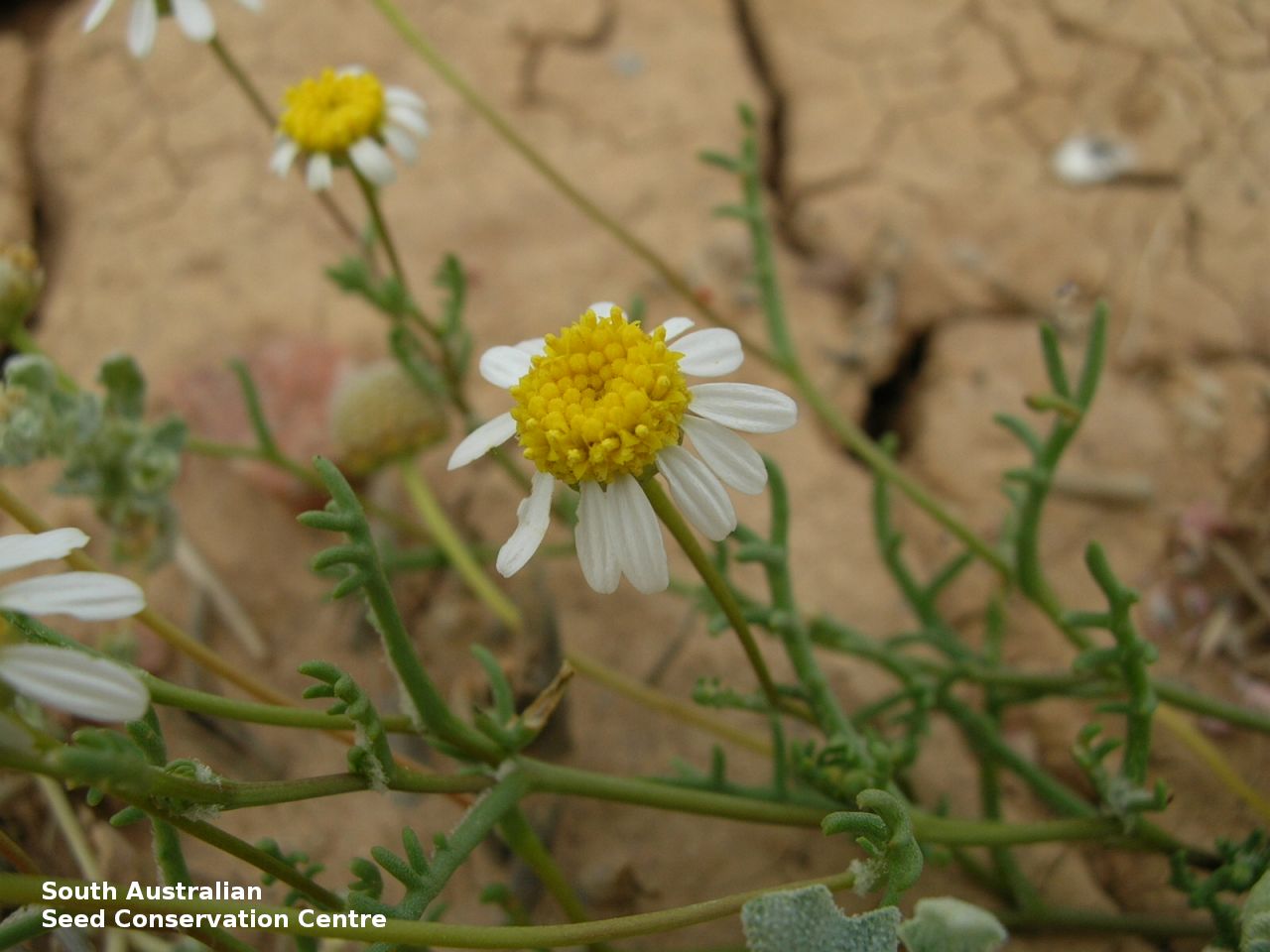
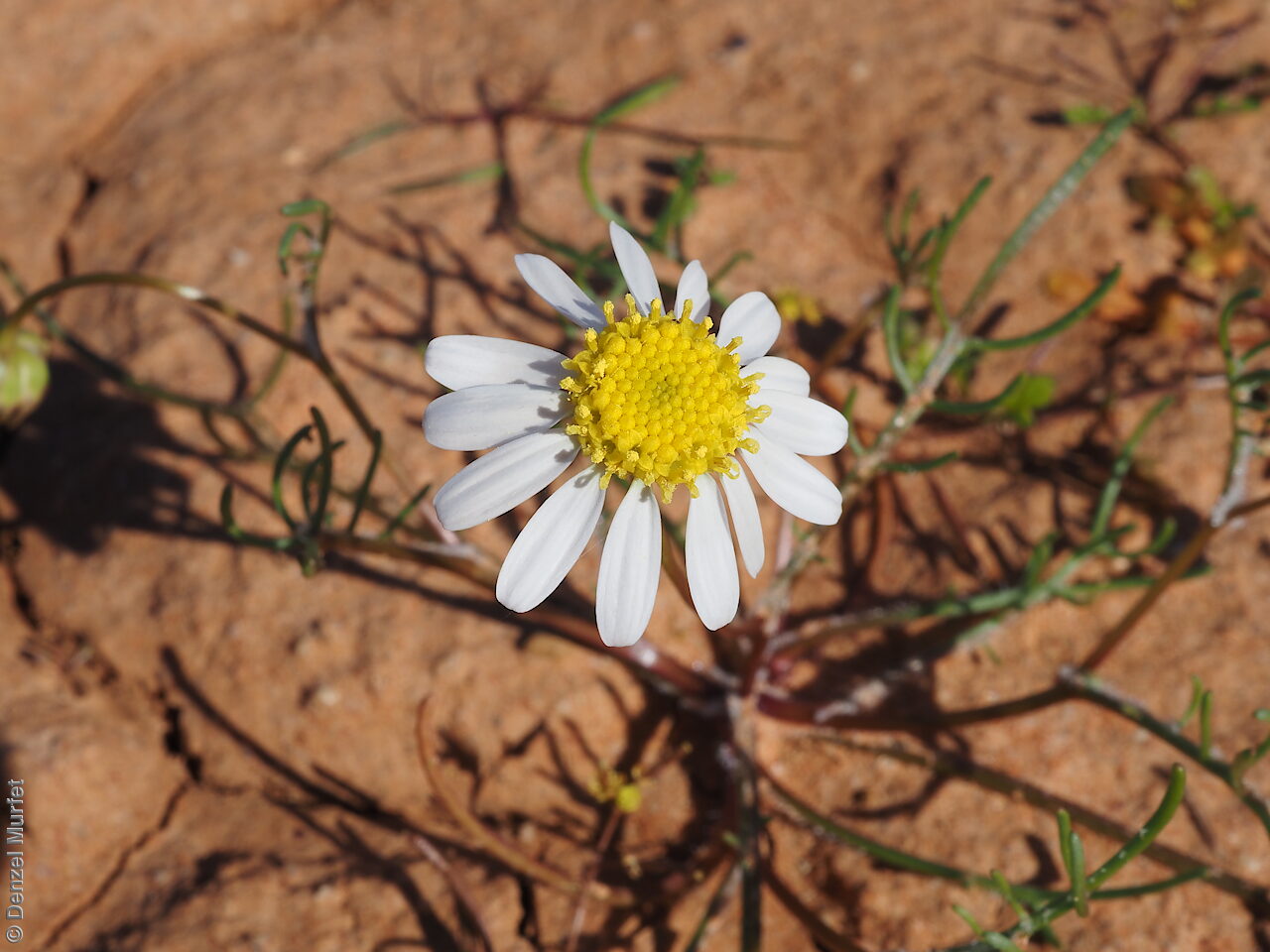
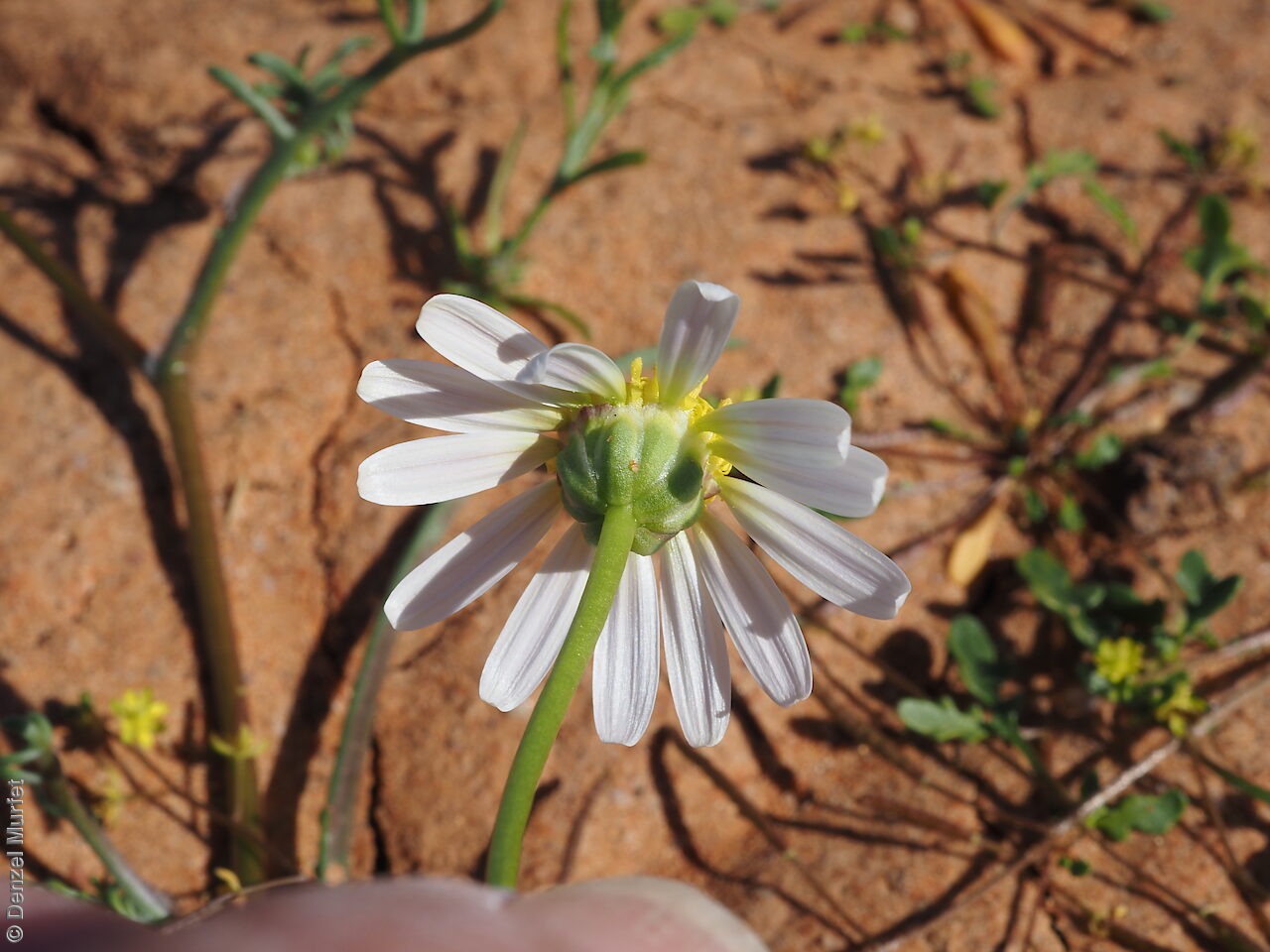
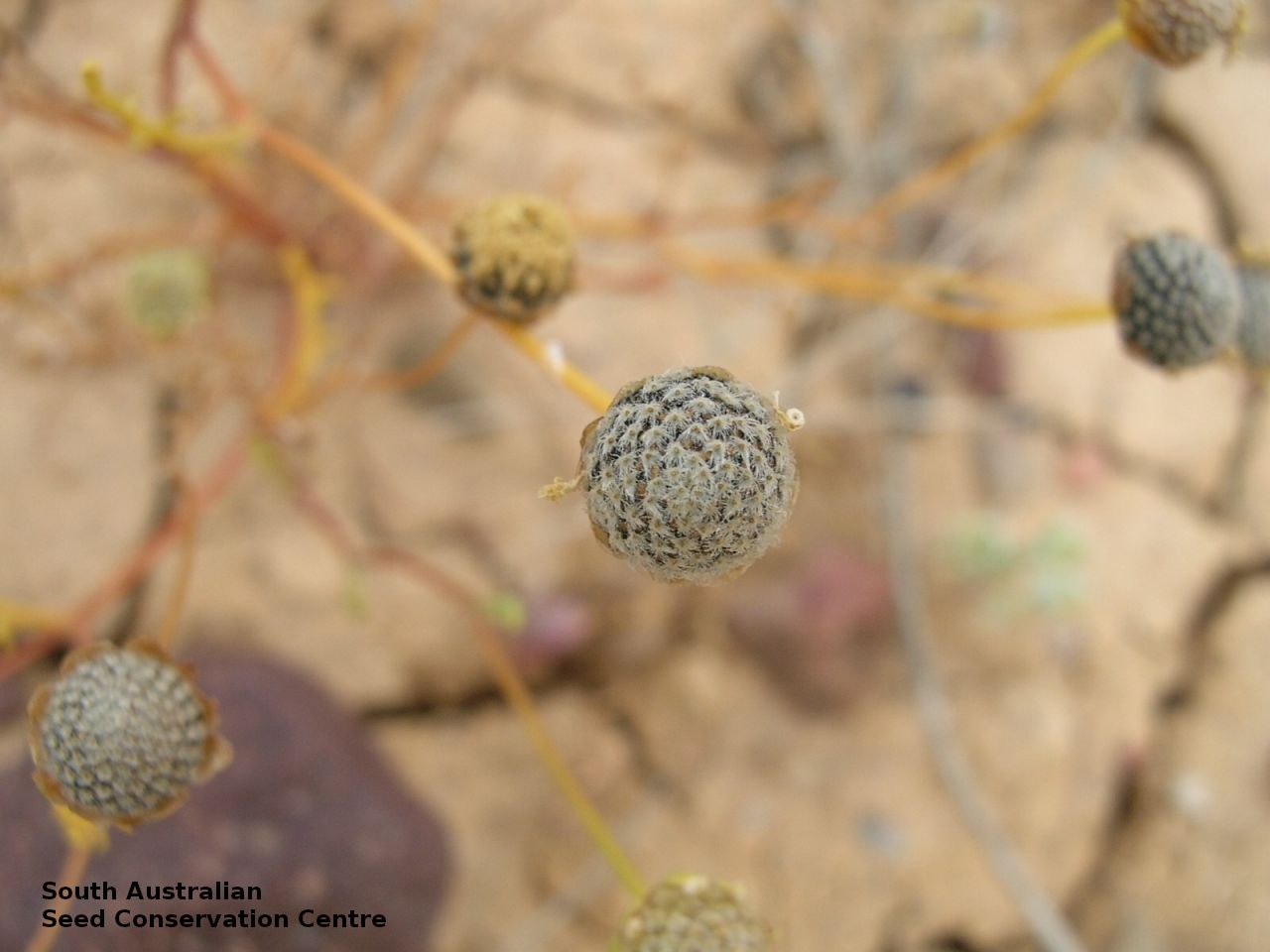
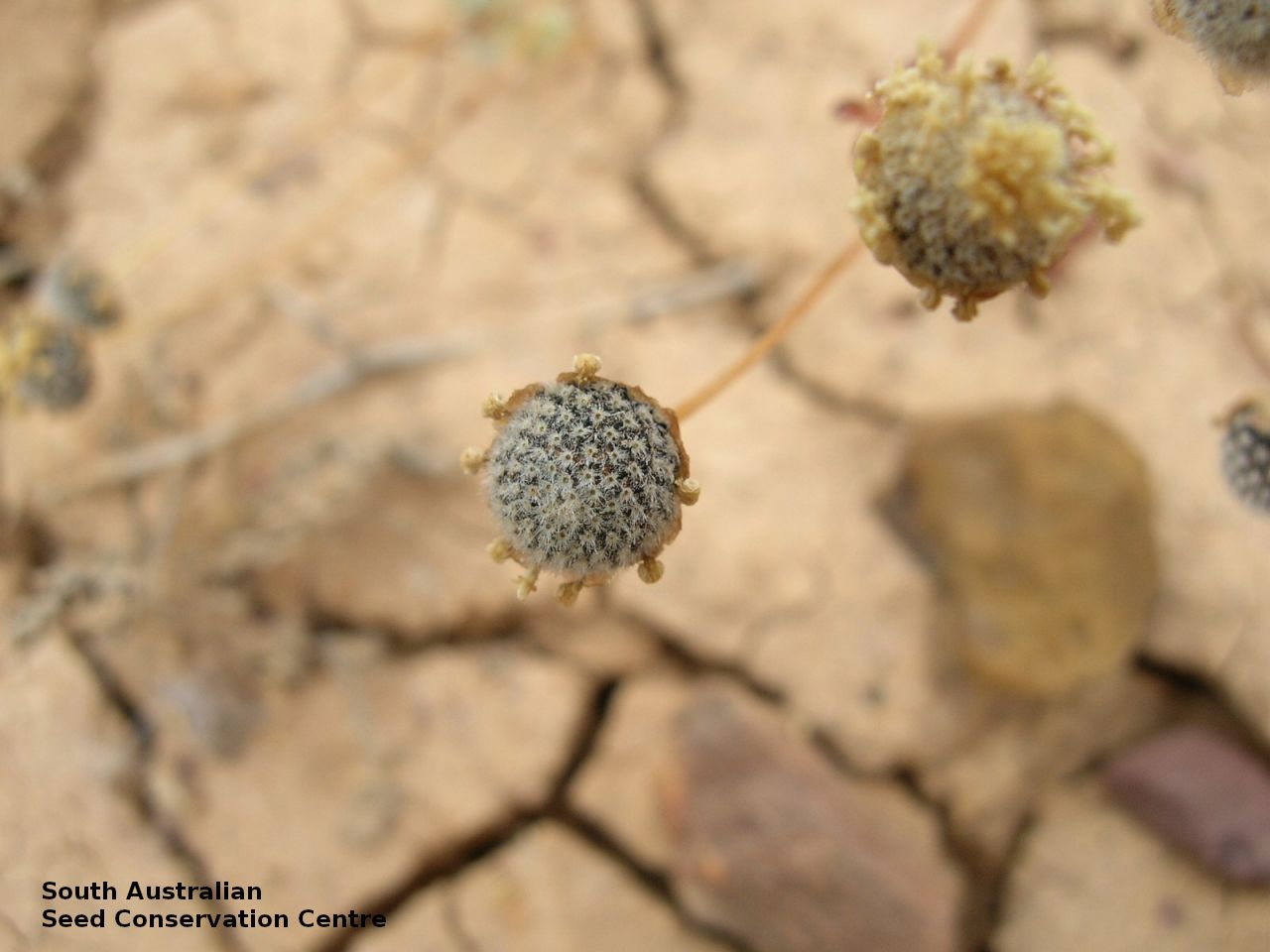
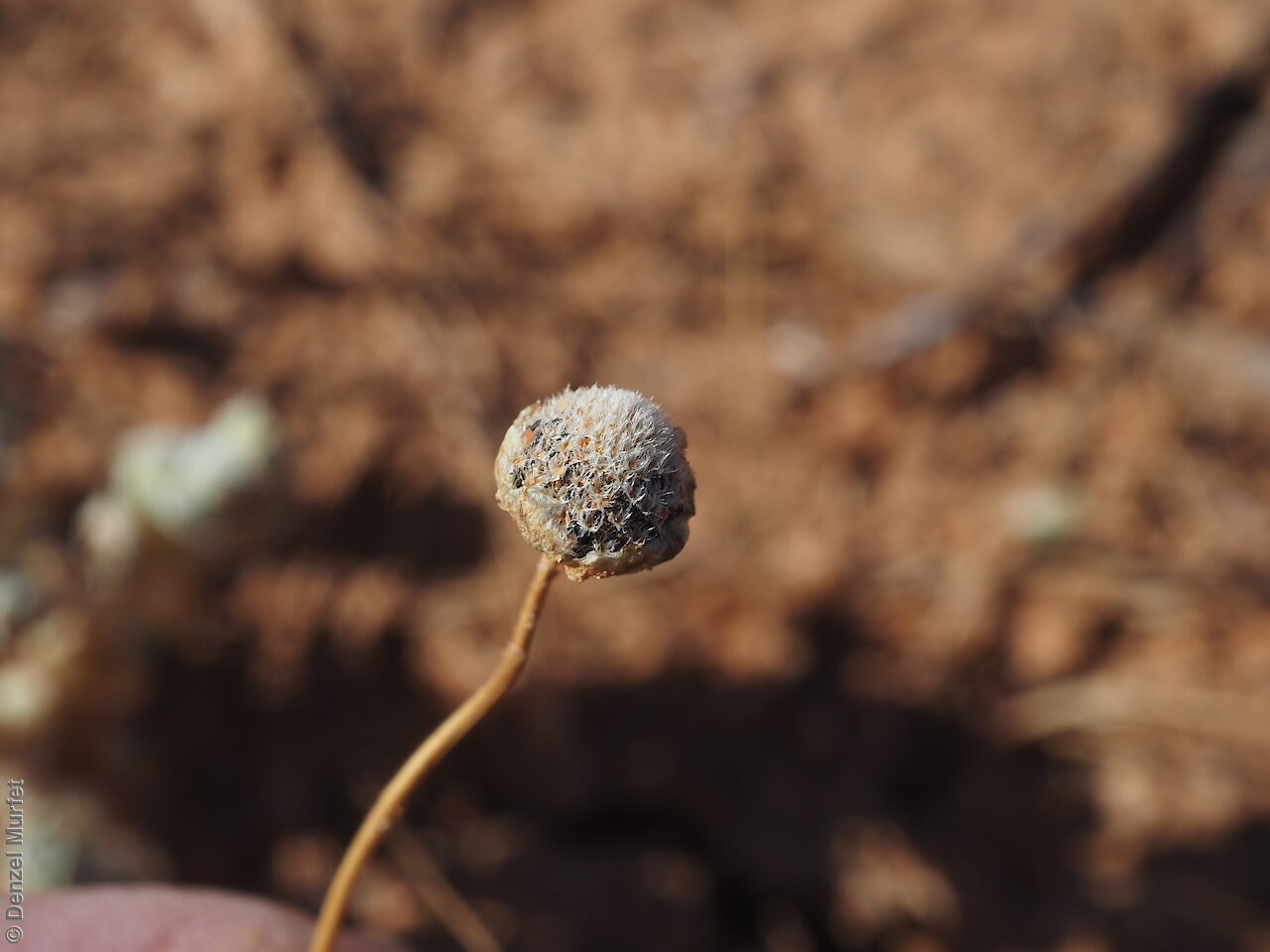
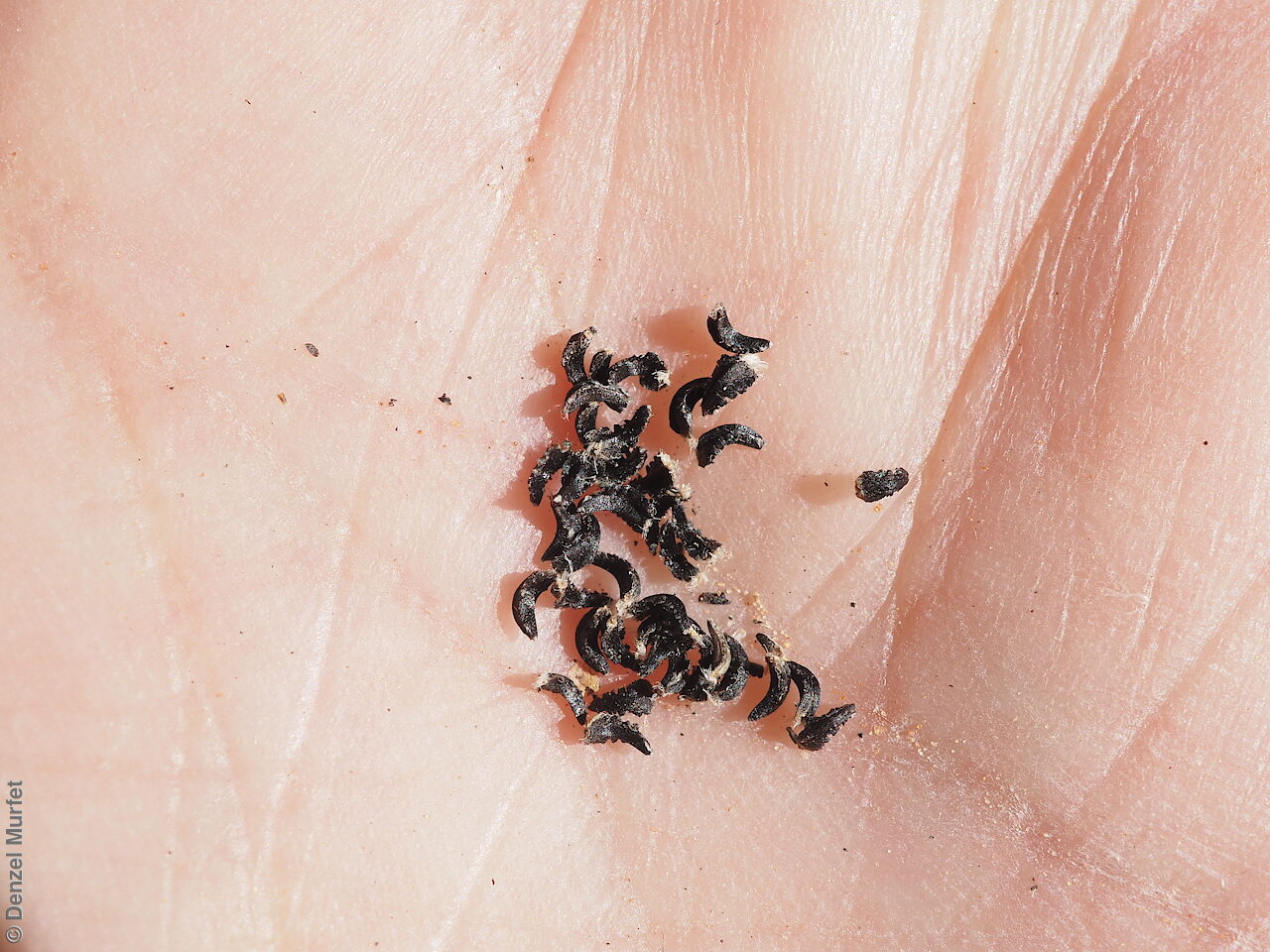
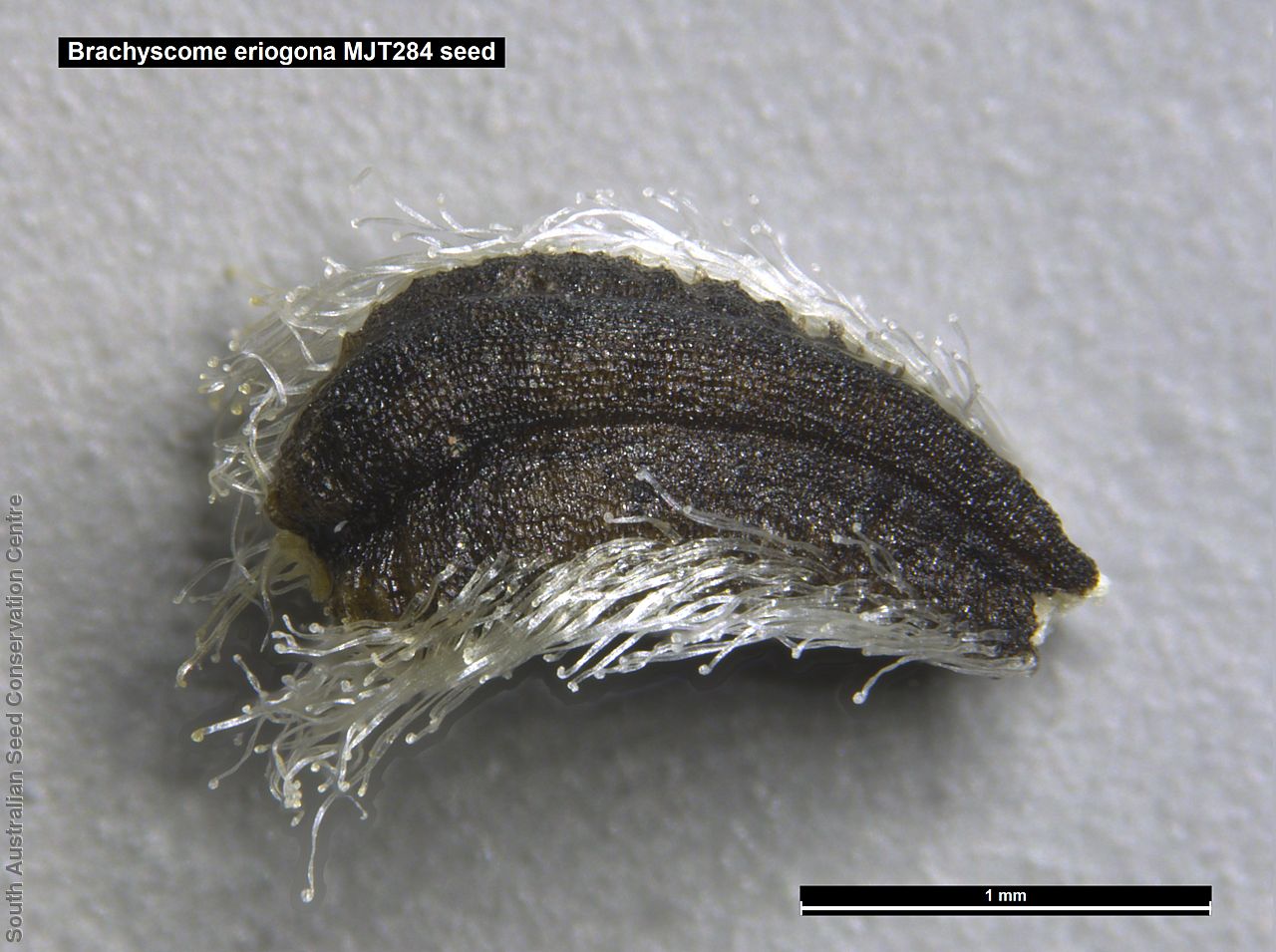
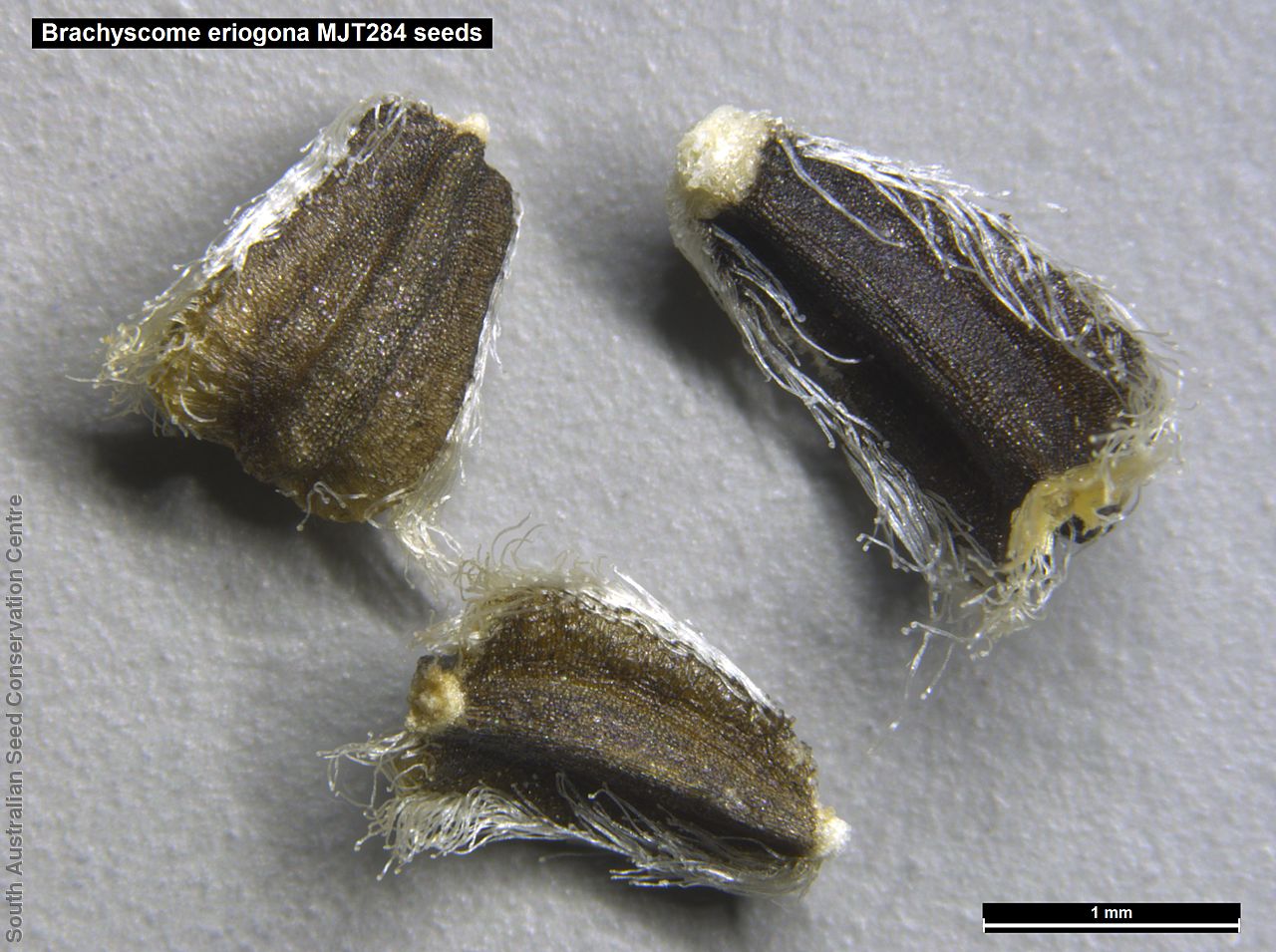

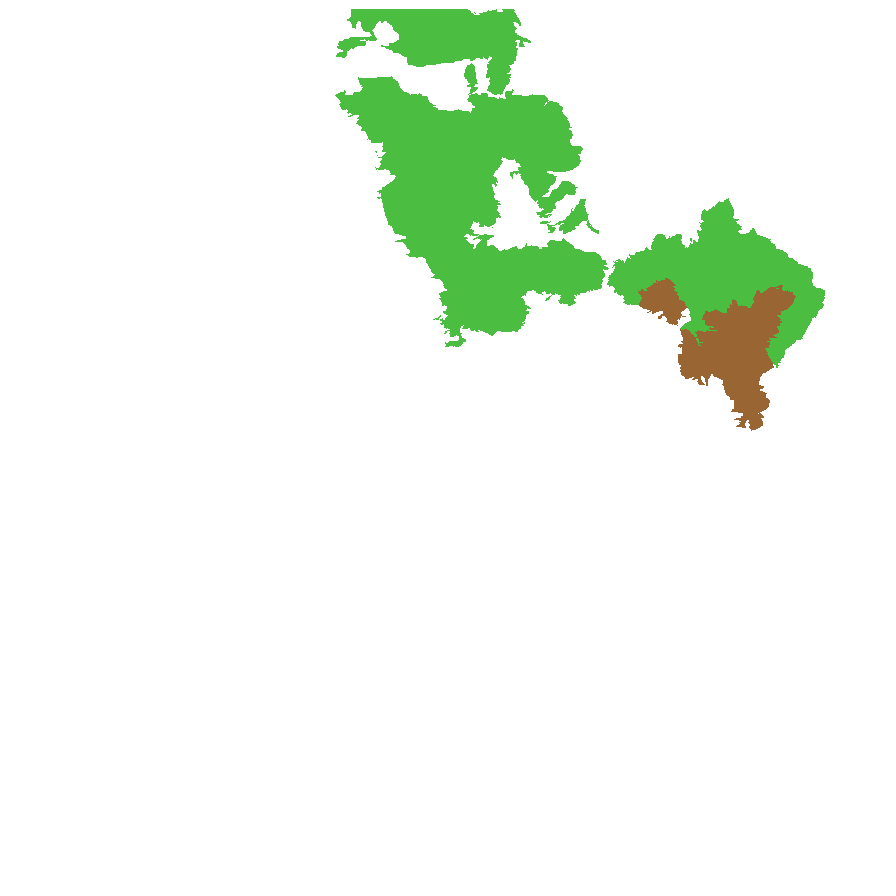
Botanical art
Prior names
Brachycome goniocarpa var. eriogona
Brachycome eriogona
Etymology
Brachyscome from the Greek 'brachys' meaning short and 'kome' meaning hair, referring to the tuft of short bristles or hairs of the pappus. Eriogona from the Greek 'erion' meaning wool and 'gonia' meaning angle; referring to the appearance of the seed having a woolly border.
Distribution and status
Found in north-eastern part in South Australia, growing in sand on gibber plains and along watercourses. Also found in Queensland and New South Wales. Native. Uncommon in South Australia. Rare in Queensland and New South Wales.
Herbarium regions: Lake Eyre, Gairdner-Torrens, Eastern
NRM region: South Australian Arid Lands
AVH map: SA distribution map (external link)
Plant description
Annual herb to 25 cm high with erect, hairless stems. Leaves basal and near-basal, not forming a rosette, pinnatisect with 3-7 linear obtuse segments, or the lower ones entire and linear to 6 cm long, glabrous. Flowers white on a long stalk. Flowering between July and September. Fruits are hard dense daisy-head. Seeds are black wedge-shaped curved seed to 2.5 mm long and 1 wide, with smooth faces and woolly hairs along the margin. Seed embryo type is spatulate fully developed.
Seed collection and propagation
Collect seeds between September and November. Pick heads that are maturing, drying off, with brown seeds. Place the seed-heads in a tray and leave to dry for a week. Then gently rub the heads with a rubber bung to dislodge the seeds. Use a sieve to separate the unwanted material. Store the seeds with a desiccant such as dried silica beads or dry rice, in an air tight container in a cool and dry place. From two collections, the seed viability was high, ranging from 95% to 100%.
| Location | No. of seeds (weight grams) | Number of plants | Date collected | Collection number Collection location | Date stored | % Viability | Storage temperature |
|---|---|---|---|---|---|---|---|
| BGA | 19,000 (6.98 g) | 100+ | 5-Oct-2010 | MJT284 Lake Eyre | 1-Jan-2012 | 100% | +5°C, -18°C |
| BGA | 9,900 (3.79 g) | 100+ | 3-Nov-2010 | MJT334 Lake Eyre | 1-Jan-2012 | 95% | -18°C |
Number of plants: This is the number of plants from which the seeds were collected.
Collection location: The Herbarium of South Australia's region name.
% Viability: Percentage of filled healthy seeds determined by a cut test or x-ray.